-
 Bitcoin
Bitcoin $119800
1.38% -
 Ethereum
Ethereum $3873
3.25% -
 XRP
XRP $3.247
1.85% -
 Tether USDt
Tether USDt $1.001
0.02% -
 BNB
BNB $840.4
5.94% -
 Solana
Solana $190.0
2.55% -
 USDC
USDC $1.000
0.03% -
 Dogecoin
Dogecoin $0.2433
2.69% -
 TRON
TRON $0.3197
-0.05% -
 Cardano
Cardano $0.8367
1.39% -
 Sui
Sui $4.327
3.11% -
 Hyperliquid
Hyperliquid $44.00
0.31% -
 Stellar
Stellar $0.4461
1.76% -
 Chainlink
Chainlink $19.25
4.61% -
 Hedera
Hedera $0.2941
3.90% -
 Bitcoin Cash
Bitcoin Cash $598.4
6.89% -
 Avalanche
Avalanche $26.19
4.67% -
 Litecoin
Litecoin $115.1
0.50% -
 Shiba Inu
Shiba Inu $0.00001427
1.55% -
 Toncoin
Toncoin $3.379
2.01% -
 UNUS SED LEO
UNUS SED LEO $8.966
-0.16% -
 Ethena USDe
Ethena USDe $1.001
0.02% -
 Uniswap
Uniswap $11.04
4.16% -
 Polkadot
Polkadot $4.239
2.00% -
 Monero
Monero $324.6
0.36% -
 Bitget Token
Bitget Token $4.672
2.46% -
 Pepe
Pepe $0.00001294
2.69% -
 Dai
Dai $0.0000
0.01% -
 Cronos
Cronos $0.1443
2.71% -
 Aave
Aave $302.9
1.98%
Are there any restrictions on the issuance of USDT?
USDT's issuance, while claimed to be 1:1 backed by USD reserves, faces scrutiny due to opaque reserve composition and auditing, varying global regulations, inherent stablecoin risks, and transparency concerns.
Feb 27, 2025 at 09:30 pm
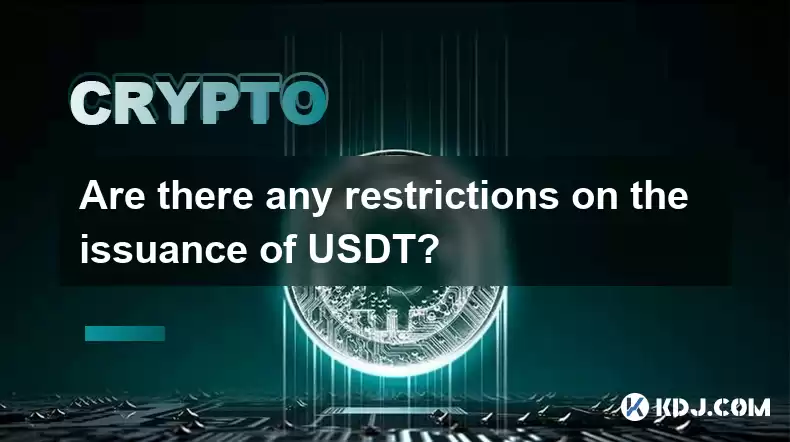
Are There Any Restrictions on the Issuance of USDT?
Key Points:
- USDT issuance is governed by Tether's claim to maintain a 1:1 backing with USD reserves. However, the exact nature and composition of these reserves, and the auditing processes surrounding them, have been subject to significant scrutiny and debate.
- Regulatory scrutiny of USDT issuance varies significantly across jurisdictions, with some regions actively pursuing stricter oversight while others remain less involved. This creates a complex and evolving regulatory landscape for Tether and its operations.
- The inherent nature of stablecoins, including USDT, presents inherent risks related to maintaining price stability and the potential for runs or de-pegging events. The mechanisms Tether employs to manage these risks are constantly under examination.
- The transparency surrounding USDT's reserves and operations remains a critical concern for many stakeholders. The lack of consistently comprehensive and independently audited disclosures contributes to uncertainty and skepticism.
Detailed Exploration of USDT Issuance Restrictions:
- Tether's Claimed 1:1 Backing: Tether maintains a public assertion that each USDT in circulation is backed by an equivalent amount of USD reserves. This is the cornerstone of its operation as a stablecoin, aiming to maintain a stable 1:1 peg with the US dollar. However, the details of these reserves remain a point of contention. While Tether publishes periodic attestations, these often lack the level of detail and independent verification many investors and regulators desire. The composition of these reserves – whether they include commercial paper, treasury bills, or other assets – has been a subject of intense debate, particularly during periods of market volatility. The lack of granular transparency leaves room for speculation about the true risk profile associated with USDT's backing. Furthermore, the very nature of a 1:1 backing implies a constant need for adjustment in the reserves as USDT is minted and redeemed. This process, itself, is not entirely transparent, leading to questions about potential delays or discrepancies between the circulating supply and the actual reserves held. The speed and efficiency with which Tether can adjust its reserves to maintain the peg are crucial aspects often left unaddressed in public statements. The potential for even short-term deviations from the peg can trigger significant market reactions, highlighting the inherent fragility of this system. Understanding the intricacies of reserve management, including the types of assets held, their liquidity, and the processes for adjusting the reserves, is critical to assessing the overall risk of investing in or using USDT.
- Regulatory Landscape and Jurisdictional Differences: The regulatory environment surrounding USDT and stablecoins in general is fragmented and evolving. Different jurisdictions adopt varying approaches, ranging from relatively lax oversight to active attempts to regulate stablecoin issuance and operations. Some regions have implemented specific licensing requirements for stablecoin issuers, while others are still developing frameworks. The lack of a universally accepted regulatory standard creates challenges for Tether, requiring it to navigate a complex web of legal and compliance obligations across various jurisdictions. This necessitates a significant investment in legal and compliance resources, and the risk of non-compliance in certain jurisdictions can lead to significant penalties or operational disruptions. Moreover, the regulatory landscape is constantly shifting, requiring Tether to adapt its operations and internal processes to keep pace with evolving legal requirements. The potential for future regulatory changes remains a significant uncertainty for Tether and its users. This includes the possibility of stricter reserve requirements, limitations on the types of assets that can be used for backing, and even outright bans on certain stablecoins. Understanding the specific regulatory environment in different jurisdictions is crucial for anyone interacting with USDT.
- Inherent Risks of Stablecoins and Mechanisms for Risk Mitigation: Stablecoins, by their very nature, are susceptible to various risks that can threaten their price stability. One of the most significant risks is the potential for a bank run, where a large number of users simultaneously attempt to redeem their USDT for USD. This can create a liquidity crunch, potentially causing the peg to break. Tether employs various mechanisms to mitigate these risks, including maintaining a diversified portfolio of reserves and utilizing various financial instruments to manage liquidity. However, the effectiveness of these mechanisms is subject to ongoing debate and scrutiny. The transparency surrounding these risk mitigation strategies is crucial for building investor confidence. A lack of detailed information about the strategies employed and their effectiveness can lead to increased uncertainty and potentially exacerbate negative market sentiment. Furthermore, the potential for unforeseen events, such as unexpected market downturns or regulatory changes, can significantly impact the ability of Tether to maintain the peg. Understanding the inherent risks associated with stablecoins and the mechanisms employed by Tether to mitigate these risks is essential for informed decision-making.
- Transparency and Auditing Concerns: The lack of consistent and comprehensive auditing of Tether's reserves has been a major source of concern for critics and regulators. While Tether has periodically released attestations from accounting firms, these have often been criticized for lacking the depth and independence required to provide full assurance about the accuracy and completeness of the reserves. The limited scope of these attestations, coupled with the absence of independent audits, has fueled skepticism about the true nature of Tether's backing. This lack of transparency has contributed to a lack of trust among some stakeholders, potentially impacting the stability and adoption of USDT. Improved transparency, including the provision of regular, independently audited financial statements that detail the composition and valuation of reserves, is crucial for building confidence in the stability of USDT. The ongoing debate surrounding the transparency of Tether's operations highlights the importance of robust auditing and disclosure practices for maintaining the integrity of the stablecoin market. Increased scrutiny and demand for higher levels of transparency will likely continue to shape the future of Tether and other stablecoins.
FAQs:
Q: Is USDT fully backed by USD?
A: Tether claims a 1:1 backing of USDT with USD reserves. However, the exact composition and verification of these reserves have been subject to considerable debate and scrutiny, with a lack of consistently comprehensive and independently audited disclosures. The claim of full backing remains a point of contention.
Q: What are the risks associated with using USDT?
A: Risks include the potential for de-pegging from the US dollar due to liquidity issues, regulatory uncertainty, and concerns regarding the transparency and verification of Tether's reserves. Furthermore, the inherent risks of bank runs and market volatility pose threats to the stability of the peg.
Q: Are there any regulations governing USDT issuance?
A: The regulatory landscape for stablecoins, including USDT, varies significantly across jurisdictions. Some regions are actively pursuing stricter oversight, while others have yet to establish comprehensive regulatory frameworks. This creates a complex and evolving environment for Tether's operations.
Q: How is USDT issued?
A: The precise mechanics of USDT issuance are not entirely transparent. However, it's understood that Tether claims to issue new USDT when there's a corresponding increase in USD reserves. The process of minting and redeeming USDT is linked to the management of these reserves, a process whose specifics remain somewhat opaque.
Q: What happens if Tether cannot maintain the 1:1 peg?
A: If Tether fails to maintain the peg, it could lead to significant market volatility and potential losses for users holding USDT. The value of USDT could decline sharply, impacting the value of any transactions or investments involving the stablecoin. The extent of the impact would depend on the magnitude and duration of the de-pegging event.
Disclaimer:info@kdj.com
The information provided is not trading advice. kdj.com does not assume any responsibility for any investments made based on the information provided in this article. Cryptocurrencies are highly volatile and it is highly recommended that you invest with caution after thorough research!
If you believe that the content used on this website infringes your copyright, please contact us immediately (info@kdj.com) and we will delete it promptly.
- Tether Gold's Meteoric Rise: Market Cap and Soaring Gold Demand
- 2025-07-28 10:30:11
- Reddit, Crypto, and Altcoins: Navigating the Hype in 2025
- 2025-07-28 10:30:11
- Bitcoin, Altcoin, Volume Surge: Decoding the Crypto Market's Latest Moves
- 2025-07-28 10:50:20
- Bitcoin, Altcoins, and 2024 Targets: A NYC Perspective
- 2025-07-28 10:50:21
- Moo Deng Meme-Coin Mania: ROI or Just Hype?
- 2025-07-28 10:55:13
- Ethereum, Injective, and Tokenized Stock: A New Era in DeFi?
- 2025-07-28 11:10:12
Related knowledge
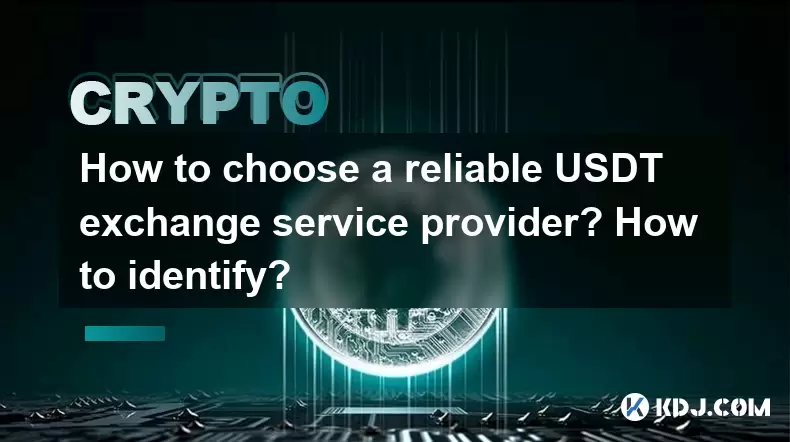
How to choose a reliable USDT exchange service provider? How to identify?
Jun 12,2025 at 03:15pm
Understanding the Role of USDT in Cryptocurrency TradingUSDT (Tether) is one of the most widely used stablecoins in the cryptocurrency market. It is d...
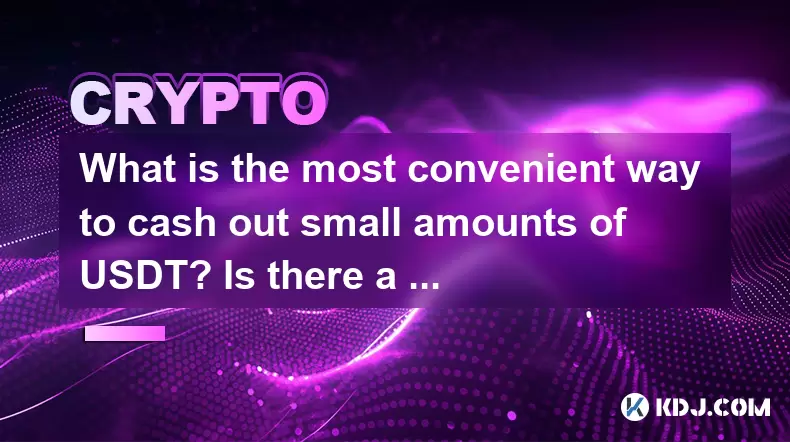
What is the most convenient way to cash out small amounts of USDT? Is there a shortcut?
Jun 11,2025 at 11:00pm
Understanding the Need to Cash Out Small USDT AmountsCashing out small amounts of USDT can be a challenge for many crypto users. Traditional methods o...
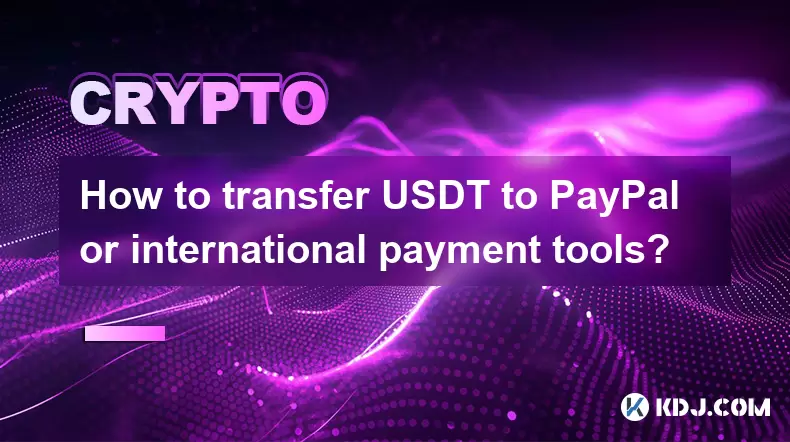
How to transfer USDT to PayPal or international payment tools?
Jun 15,2025 at 05:28am
Understanding the Basics of USDT and PayPal IntegrationUSDT (Tether) is a stablecoin pegged to the US dollar, offering blockchain-based value transfer...
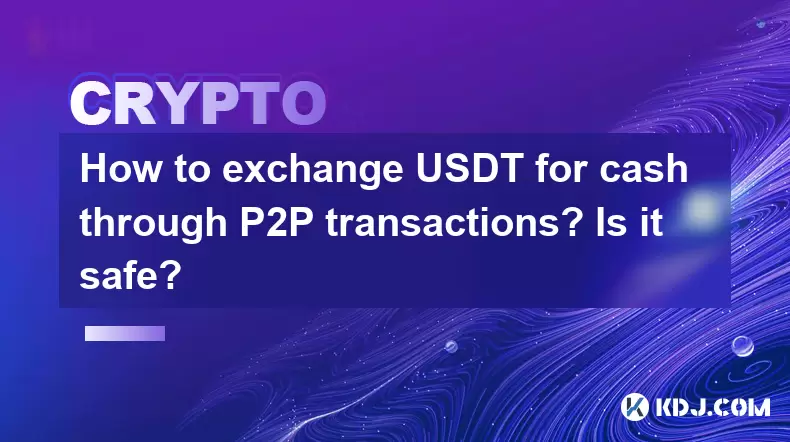
How to exchange USDT for cash through P2P transactions? Is it safe?
Jun 18,2025 at 07:56am
Understanding USDT and P2P TransactionsTether (USDT) is a stablecoin pegged to the value of the US dollar, making it a popular choice for users who wa...
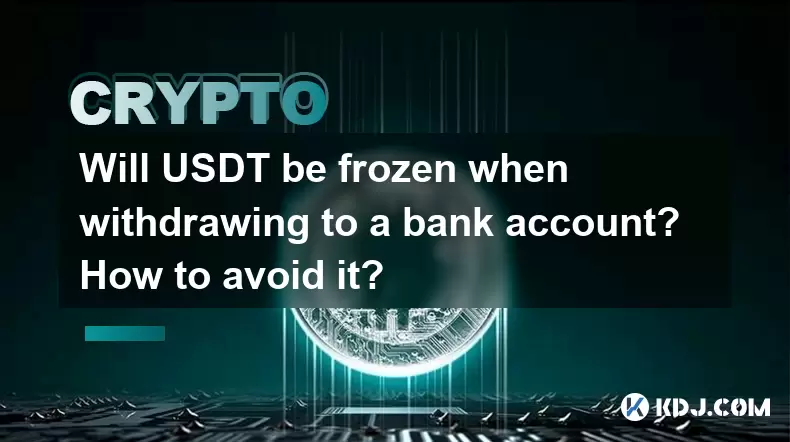
Will USDT be frozen when withdrawing to a bank account? How to avoid it?
Jun 15,2025 at 10:03am
Understanding USDT Withdrawals and Bank Account Freezing RisksWhen users decide to withdraw USDT (Tether) to a bank account, one of the most common co...
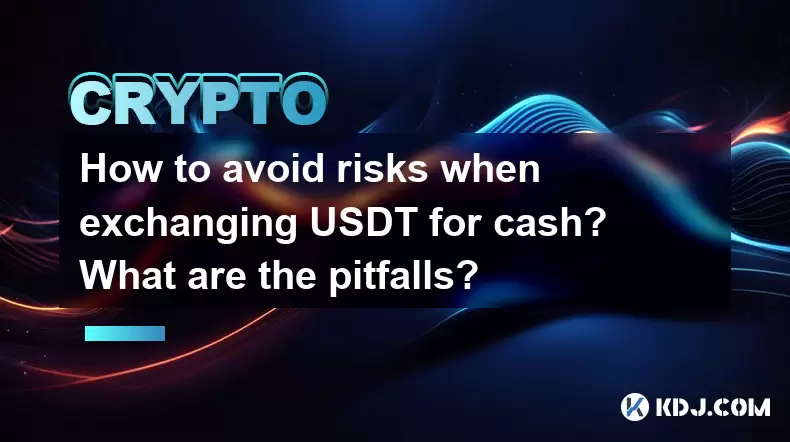
How to avoid risks when exchanging USDT for cash? What are the pitfalls?
Jun 11,2025 at 08:14pm
Understanding the Risks of Exchanging USDT for CashWhen exchanging USDT (Tether) for cash, users must be aware of the potential risks involved. As a s...

How to choose a reliable USDT exchange service provider? How to identify?
Jun 12,2025 at 03:15pm
Understanding the Role of USDT in Cryptocurrency TradingUSDT (Tether) is one of the most widely used stablecoins in the cryptocurrency market. It is d...

What is the most convenient way to cash out small amounts of USDT? Is there a shortcut?
Jun 11,2025 at 11:00pm
Understanding the Need to Cash Out Small USDT AmountsCashing out small amounts of USDT can be a challenge for many crypto users. Traditional methods o...

How to transfer USDT to PayPal or international payment tools?
Jun 15,2025 at 05:28am
Understanding the Basics of USDT and PayPal IntegrationUSDT (Tether) is a stablecoin pegged to the US dollar, offering blockchain-based value transfer...

How to exchange USDT for cash through P2P transactions? Is it safe?
Jun 18,2025 at 07:56am
Understanding USDT and P2P TransactionsTether (USDT) is a stablecoin pegged to the value of the US dollar, making it a popular choice for users who wa...

Will USDT be frozen when withdrawing to a bank account? How to avoid it?
Jun 15,2025 at 10:03am
Understanding USDT Withdrawals and Bank Account Freezing RisksWhen users decide to withdraw USDT (Tether) to a bank account, one of the most common co...

How to avoid risks when exchanging USDT for cash? What are the pitfalls?
Jun 11,2025 at 08:14pm
Understanding the Risks of Exchanging USDT for CashWhen exchanging USDT (Tether) for cash, users must be aware of the potential risks involved. As a s...
See all articles

























































































